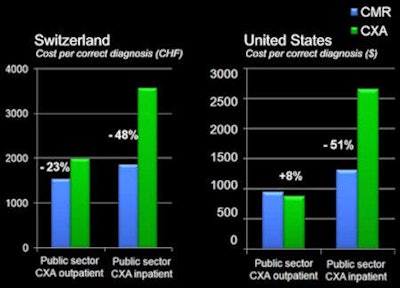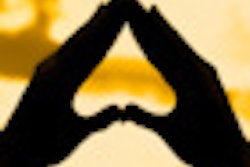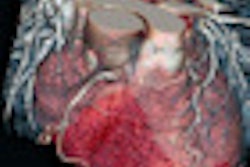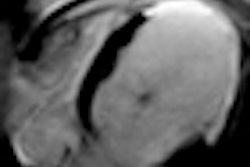
Abundant clinical evidence has emerged to support the use of cardiac MRI as a robust technique. New data presented at the European Society of Cardiology (ESC) congress, held in Paris last week, may now help to convince insurers that it can advance into routine use.
Analysis prepared specifically for Swiss payers showed that cardiac MR can reduce the costs of a diagnostic workup for patients with known or suspected coronary artery disease (CAD) by 23% compared with conventional angiography. Dr. Juerg Schwitter and colleagues from Lausanne University Hospital in Switzerland extended the finding to show how cardiac MR may lower the costs of CAD management in Germany and the U.S.
Tapping into the European Cardiovascular MR Registry with 11,040 consecutive patients drawn from 20 hospitals, the Lausanne group focused on 2,717 patients with known or suspected CAD, according to cardiac MR exams. Among these patients, 20.6% were diagnosed as positive, 72.9% as negative, and 6.5% uncertain. The cost of two diagnostic strategies were then calculated, first where angiography was given only to patients who were diagnosed positive for ischemia by the cardiac MR exam, and then where angiography would have been given to all patients.
Those patients with an uncertain diagnosis underwent additional testing, such as echocardiography, cardiac CT, or SPECT, the costs of which were added to the cardiac MR strategy. On the other hand, the costs of fractional flow reserve tests conducted during invasive angiography were not added to the angiography costs, which may underestimate the final bill.
On an outpatient basis in Switzerland, the costs for the cardiac MR strategy was shown to be 23% lower than the invasive angiography approach. On an inpatient basis, the difference was 48% lower for cardiac MR. In the outpatient setting, the difference was even more significant in Germany, with a 50% saving for cardiac MR, while in the U.S., cardiac MR cost 8% more than angiography. In the U.S., cost savings amounted to 51% with cardiac MR, when invasive angiography was performed on an inpatient basis.
In Germany, more than 850,000 invasive angiography exams are performed each year at a cost of 500 million euros ($702 million U.S.), with an estimated 70% finding negative results, according to Schwitter. The analysis suggests a national strategy for cardiac workups adopting the cardiac MR approach would yield substantial savings for German insurers, he noted.
Beyond the potential to save costs, cardiac MR provides medical advantages for the patients, particularly the absence of radiation.
"This issue of ionizing radiation is of paramount importance for the patients," Schwitter said. "Cardiac MR can be repeated whenever needed, which is a great advantage for monitoring a chronic disease such as coronary artery disease."
Cardiac MR also yields additional information on left ventricle function and viability, as well as the anatomy of valves and large vessels, he said.
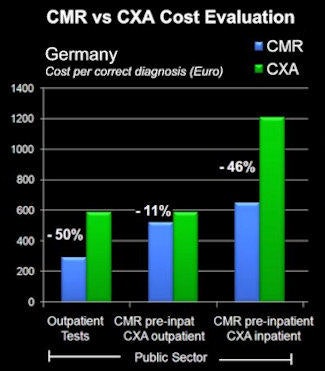 Source: Charts provided by Dr. Juerg Schwitter, University Hospital of Lausanne. CMR = cardiac MR, CXA = invasive angiography.
Source: Charts provided by Dr. Juerg Schwitter, University Hospital of Lausanne. CMR = cardiac MR, CXA = invasive angiography.
